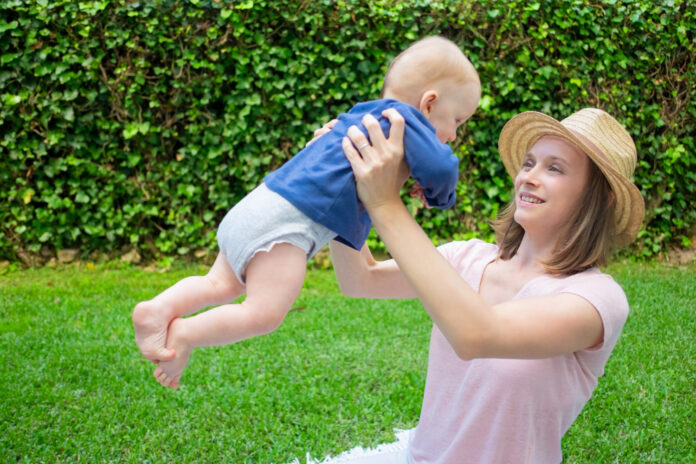Are you the parent of a newborn? Do you sometimes feel tired from picking up small things for your baby? Do you also think when do babies start reaching to be picked up? Though they are lovely bundles of wonder, newborns cannot articulate their needs. The infant’s primary way of communication is crying, parents must ascertain the cause of their tears.
Guessing if they’re hungry, uneasy, or just in the mood for cuddles might be the game! Don’t worry, new parents—developmental milestones can provide guidance. Reaching is one such milestone that may indicate your baby’s desire to be picked up.
In this blog, you will learn more about when do babies start reaching to be picked up.
The Early Stages Reflexes and Development
The grab reflex is one of the few basic reflexes that newborns have. Their little fingers cling closely to everything placed in their palm as a result of this response. It’s a survival strategy to make sure they cling to their caretaker for protection and warmth. That being said, this isn’t really reaching in the sense of making a deliberate attempt to seize anything.
When do infants begin to consciously reach out to be scooped up? This normally occurs between three and four months of age. As their neck and core muscles strengthen, they can raise their heads and use their arms to prop themselves up when they’re on their stomachs. As a result of their increased control, they start reaching for everything, even you, their favorite person!
From Swipes to Grabs: The Progression of Reaching
Your baby’s initial attempts at reaching may appear more like swipes or flailing actions. They will swat at toys that are hanging or items that are near their hands. This phase is critical for the development of depth perception and hand-eye coordination. These swipes will soon develop into more deliberate reaches, and they will be able to hold things that are placed directly in their hands.
It becomes increasingly obvious by the time a baby reaches out to be taken up, at six months of age. Their motor abilities and eyesight have greatly developed. They can now use their eyes to track objects and extend an outstretched hand to grasp them. This newfound power also applies to you.
Understanding the Response Of Reaching
Remembering that every infant grows at a different rate is crucial. The age at which babies start reaching to be picked up might vary depending on the child. Some infants may purposefully arrive as early as two months, but others could need a little longer. Make an appointment with your doctor right away if you have concerns about your child’s growth.
Here are some additional points to consider:
-
Context matters
Reaching may also indicate a desire to engage with a toy or investigate their environment. To determine your baby’s intentions, pay attention to their body language, facial expressions, and vocalizations.
-
Not all cries mean “pick me up”
While reaching out is frequently an obvious sign that a baby needs to be carried, it’s vital to keep in mind that crying can also be the result of other demands. Crybabies cry for a variety of reasons, and one of them is to be held. They may be expressing their desire for food or rest; they may also be indicating that they are hungry.
A baby may also cry for a diaper change due to pain from a damp or soiled diaper. It’s crucial to recognize these distinct indications in order to attend to a screaming baby’s many demands successfully.
-
Respond, but don’t spoil
It’s crucial to react to your baby’s reaches out for you pleasantly and quickly. Gently pick them up, speak to them in a calming tone, and give them lots of hugs. This reassures them and strengthens their sense of security and confidence in you. Striking a balance is necessary to prevent developing an unhealthy reliance on being held, though.
Giving children the love and attention they want is great, but make sure they get chances to play on their own as well. Make sure kids have a fun and secure space to explore and engage with toys on their own.
The Final Note
To summarize, raising a newborn is an amazing, joyful, and educational experience. Even if they can’t express their demands vocally just yet, babies communicate via crying, and it’s up to parents to figure out why they’re crying. We hope that by reading this blog, you will understand baby reflexive growth, when do babies start reaching to be picked up, and their milestones.
Basic reflexes like the grasp reflex, which makes sure babies cling to their caregivers for warmth and security, are the first in the process.
Around three or four months of age, newborns begin to stretch out as they grow consciously. This milestone represents their growing need for connection and contact, in addition to their physical growth. By around six months, their newfound abilities allow them to extend their arms toward familiar faces, signaling a desire to be picked up and held.
Parents establish the groundwork for a lifetime of communication, trust, and connection with their child by recognizing when do babies start reaching to be picked up and responding lovingly to this milestone.




